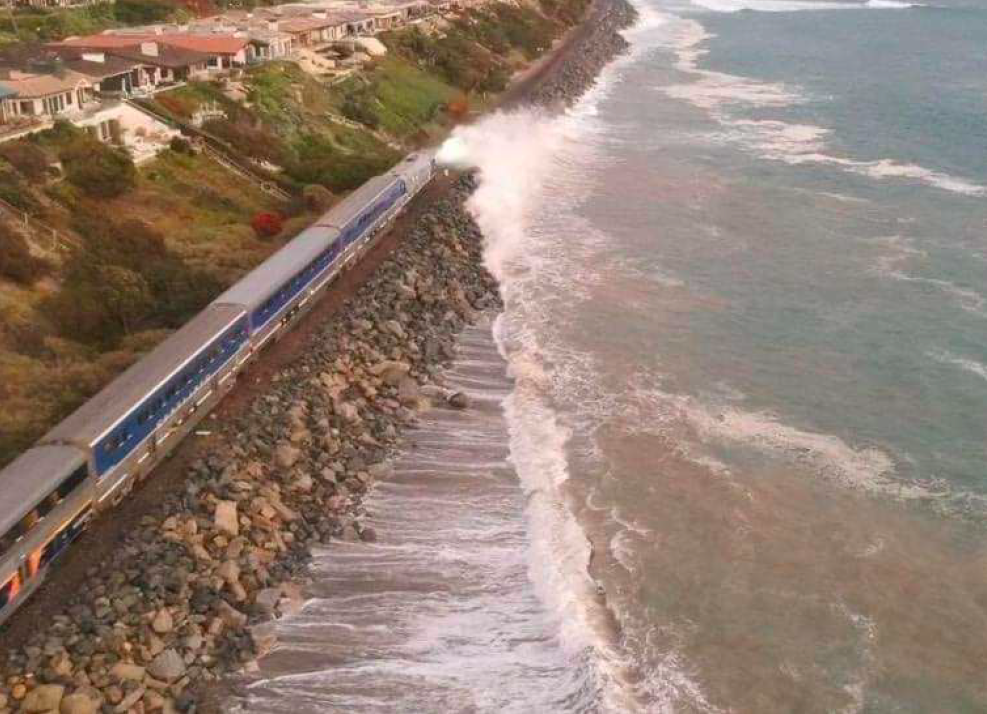Caltrans issued an emergency declaration for the recent landslide onto railroad tracks near San Clemente, which interrupted passenger train service there and has forced train riders to take a connecting bus between San Juan Capistrano and Oceanside.
Recognizing that rail travel is vital and that the corridor "provides critical commuter, intercity and freight rail service every day," Director Tony Tavares issued the emergency declaration so that the Orange County Transit Authority (OCTA) can access emergency funding immediately "to fix this landslide and get the trains moving again as quickly and safely as possible.”
The January 24 landslide was one of a series that have interrupted service on Amtrak's Surfliner route as well as local Metrolink commuter trains in the past few years. OCTA and Metrolink have already been working to stabilize the area, but there is as yet no estimate for when passenger service will resume.
Freight trains meanwhile continue to use the route at very slow speeds during the late night hours.
The section of track below the cliffs in San Clemente have been the subject of intense study and scrutiny in the past few years, as the cliffs have eroded and the rail line itself, hugging the coast, has been inundated by sea level rise. The California legislature formed a select committee to discuss the problems, but has come to no conclusions.
Governance problems also hamper solutions, and while Caltrans' declaration makes immediate emergency funds available, it won't lead to long-term solutions to the Southern California rail corridor's deeper problems.
It's important to find those long-term solutions, and it's important to do so with the same alacrity and focus that California applies to fixing highways. The section of track in question is part of the LOSSAN corridor, which operates rail service from San Luis Obispo through Los Angeles to San Diego, which is one of the most heavily used rail corridors in the nation.






